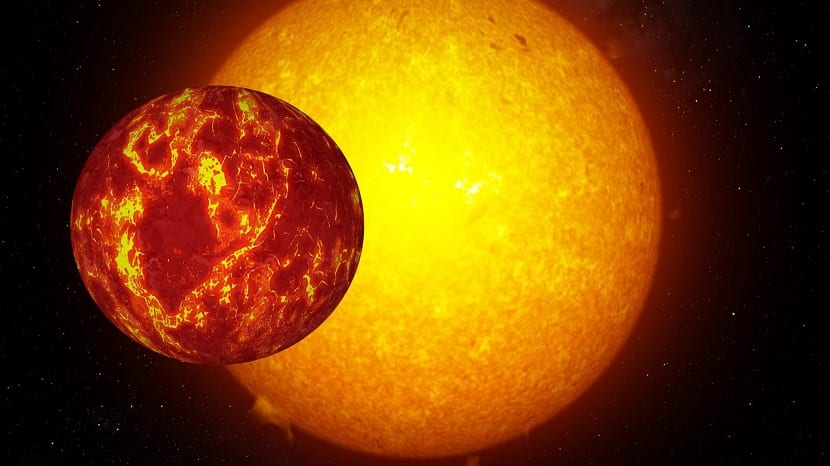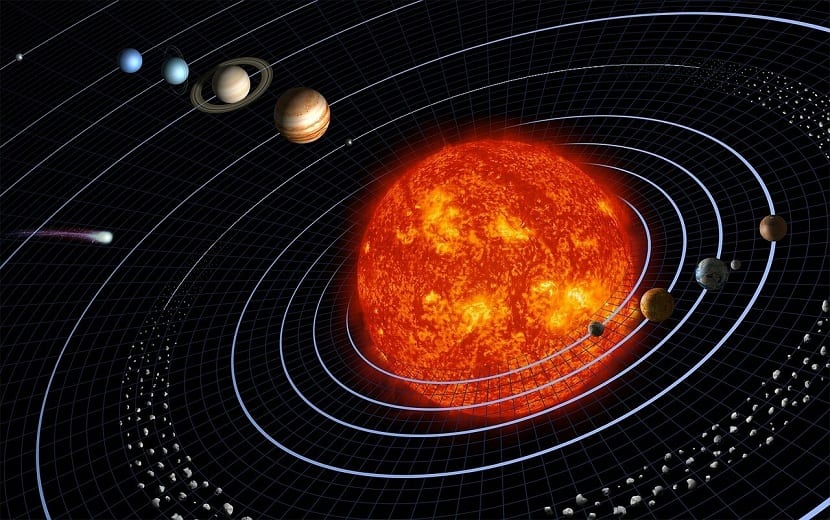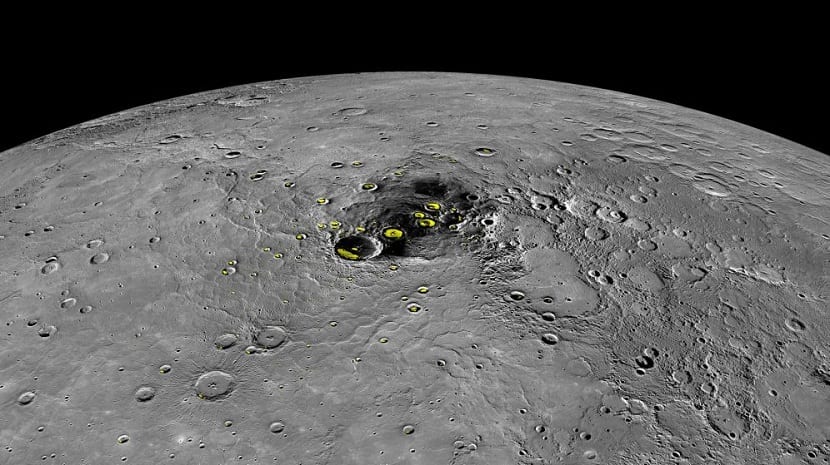
Returning to our solar system, we meet the eight planets with their respective satellites and our star the Sun. Today we come to talk about the smallest planet that revolves around the Sun. Planet Mercury. In addition, it is the closest of all. Its name comes from a messenger of the gods and it is not clear when it was discovered. It is one of the five planets that can be seen well from Earth. Contrary to planet Jupiter it is the smallest of all.
If you want to know in depth this interesting planet, in this post we will tell you everything todo
Planet Mercury

In the oldest times it was presumed that the planet Mercury was always facing the Sun. In a similar way to the Moon with the Earth, its rotation time was similar to the translation time. It only takes 88 days to go around the sun. However, in 1965 pulses were sent to a radar with which it was possible to determine that its rotation time is 58 days. This makes two-thirds of his time translational. This situation is called orbital resonance.
Being a planet with an orbit much smaller than that of Earth, it makes it very close to the Sun. It acquired the category of the smallest planet of the eight in the solar system. Before, Pluto was the smallest, but after considering it as a planetoid, Mercury is the replacement.
Despite its small size, It can be seen without a telescope from Earth thanks to its proximity to the Sun. It is difficult to identify due to its brightness, but it can be seen very well at dusk with the sunset to the west and it can be seen easily on the horizon.
Key features

It belongs to the group of the inner planets. It is composed of translucent and rocky materials, with a varied internal combination. The sizes of the compounds are all very similar. It has a more relevant characteristic like the planet Venus. And it is a planet that does not have a natural satellite that rotates in its orbit.
Its entire surface is made up of solid rock. Thus, together with the Earth it is part of the four rockiest planets in the solar system. According to scientists, this planet has been without any activity for millions of years. Its surface is similar to that of the Moon. It features numerous craters formed from collisions with meteorites and comets.
On the other hand, it has smooth and striped surfaces with a structure similar to that of cliffs. They are capable of stretching for hundreds and hundreds of miles and reaching heights of a mile. The core of this planet It is metallic and has a radius of approximately 2.000 kilometers. Some studies confirm that its center is also made of cast iron like that of our planet.
Size

As for the size of Mercury, it is slightly larger than the Moon. Its translation is the fastest in the entire solar system due to its proximity to the Sun.
On its surface are some formations with edges that appear in various states of preservation. Some craters are younger and the jagged edges are more pronounced by the impact of meteorites. It has large basins with several rings and a large number of lava rivers.
Among all the craters there is one that stands out for its size called Carlori Basins. Its diameter is 1.300 kilometers. A crater of this size had to cause projectiles of up to 100 kilometers. Due to the strong and continuous impacts of meteorites and comets, mountain rings with heights of up to three kilometers have been formed. Being such a small planet, the collision of the meteorites caused seismic waves that traveled to the other end of the planet, creating a completely confused area of land. Once this happened, the impact created rivers of lava.
It has large cliffs produced by cooling and by shrinking in size for many kilometers. For this reason, a wrinkled crust was formed composed of cliffs several kilometers high and long. A good part of the surface of this planet is covered by plains. This is called by scientists the intercrater zone. They must have been formed when ancient areas were buried by rivers of lava.
Temperature
As for the temperature, it is thought that being closer to the Sun is the warmest of all. However, this is not so. Its temperature can reach 400 degrees in the hottest areas. By having a very slow rotation on itself, it causes many regions of the planet to be shaded away from the Sun's rays. In these cold areas, temperatures are below -100 degrees.
Their temperatures are very varied, they can go between -183 degrees Celsius at night and 467 degrees Celsius in the day, this makes Mercury one of the hottest planets in the Solar System.
Curiosities of the planet Mercury

- Mercury is considered the planet with the most craters in the Solar System. This was due to the innumerable encounters and stumbles with countless comets and asteroids and that made impacts on its surface. A vast majority of these geological events are named after famous artists and well-known writers.
- The largest crater that Mercury has, is called Caloris Planitia, this crater can measure approximately 1.400 kilometers in diameter.
- Some places on the surface of Mercury can be seen with a wrinkled appearance, this is due to the shrinkage that the planet made when the core cooled. The result of the planet's contraction as its core cools.
- To be able to observe Mercury from Earth, it has to be at twilight, that is, before sunrise or immediately after sunset.
- In Mercury you can see two sunrises: An observer in certain places could observe this magnificent phenomenon in which the Sun appears on the horizon, stops, returns again from where it left, and again rises in the sky to continue its journey.
With this information you can learn more about this fantastic planet.